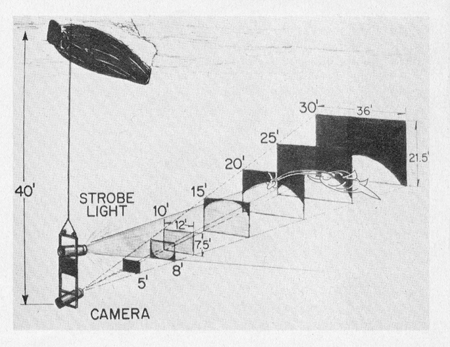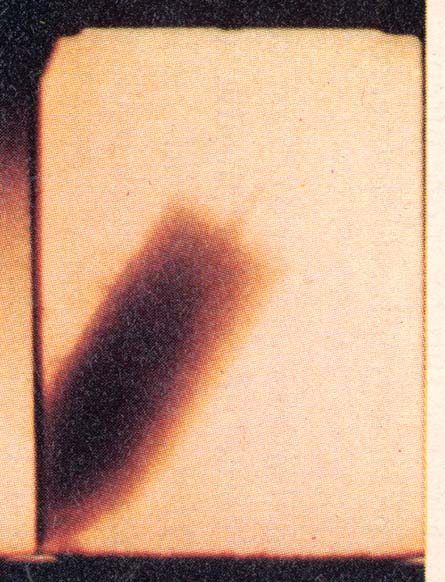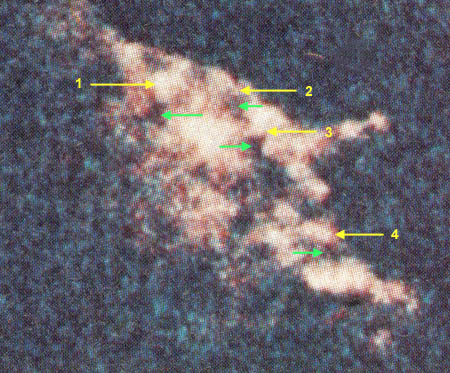All at Sea
with GUST and it's U.S.Navy Analysis
Another in Dick
Raynor's series of commentaries and corrections of material
published by the Swedish Global Underwater Search Team
A GUST World Exclusive
ROBERT RINES MOST FAMOUS UNDERWATER PICTURE
CONFIRMED BY US NAVAL ANALYSIS
World Copyright
2002 by Jan Sundberg, GUST and Clifford A. Paiva
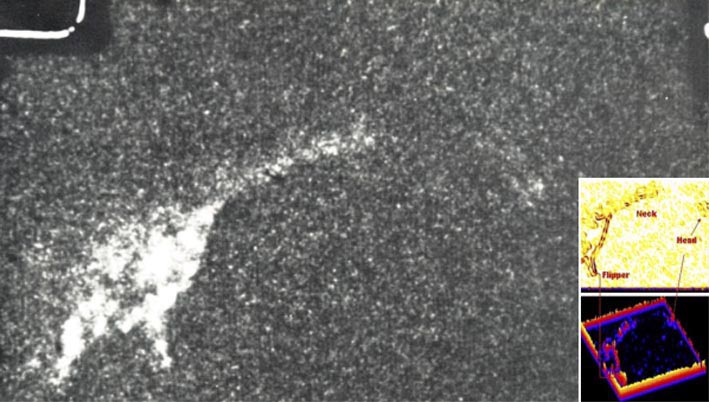
The US Naval
analysis scuppered - it got the image the wrong way up.
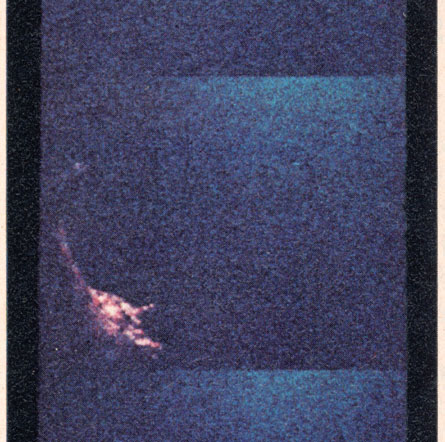
( It should be this way up when the camera is oriented normally. )
CAPTURED A PLESIOSAUR
Long time friend and physicist Clifford A. Paiva, who worked 22
years for the US Navy and Air Force Labs, and is currently heading BSM
Associates and is also an engineering physicist for EDO-AIL Engineering
Technologies, is currently based in California. Cliff has studied Dr.
Rines head-neck picture as well as other frames using, and I quote from
he's email to GUST, "The SCION, Advanced Image Processing package from
Naval Research Laboratory...". He arrived to the ineviteble conclusion
that: "Dr. Rines probably filmed a pleisosaur".
It is pertinent to ask if the Academy of
Applied Science supplied the original image for scanning in the U.S.
Navy "package", or if some other, later generation, image was used.
This statement confirms what was heard on hydrophone by GUST´s
Goran Rajala in March 2000, when we recorded "sounds like a large body
was being moved forward under water, propelled by large flippers". What
could such a creature be except maybe a plesiosaur?
What does a large body propelled by large
flippers sound like, exactly ?
UNDERWATER FOOTAGE
Investigator Clifford A. Paiva, previously with the Dahlgren Laboratory in Virginia, a Naval Surface Weapons Center and subsidiary to the US Navy, and today based in California at BSM Associates and EDO-AIL Engineering, is also very interested in cryptozoology and good friend of GUST; and in the early Autumn of this year he decided to have a closer look at Dr. Rines underwater footage from 1975.
After applying SCION, a high-quality digitizer board for scientific and industrial imaging applications, which Clifford uses to analyze missile hardbody and exhaust plumes, an extraordinary picture emerged.
"Image processing eliminates the ambient background clutter-noise which then reveals the neck and head of the animal", he explaines. "The investigated image is processed by a procedure called gradient-edge enhancement, which means that it does not specifically prove but extracts target spatial and spectral information".I see.
ESTABLISHING CORRELATION PARAMETERS
And Clifford Paiva continues: "3D of the gradient intensity frame
is also available through the SCION board. Three dimensional image analysis
generates a radiance intensity plot along xyz axes, measures the correlated
relative intensities within a frame, or sequence of frames, establishing
correlation parameters".
Cunning.
"For example: a submerged log will normally have a different reflectance
and emissivities function than a marine animal's neck reflectance and
emissivities distinguishing the target area from the ambient background
clutter. 3D further enhances the targets morphology, in this case
flippers, body, neck and head and the relative dimensions of these body
parts".
Yup.
HORN-LIKE PROJECTIONS
The light from the strobe had caught it in the mouth; the interior
was clearly illuminated and much lighter than the dark brown color of
the remainder od the head. The light had also caught the tops of the two
stalks on the top of the head. Their presence made me think of one eye
witness report in particular, that of Greta Finlay in 1952. She had described
two horn-like projections on the top of the head, as have others from time
to time.
(Usually in August, when young stags or "knobbers"
are known to swim the loch.)
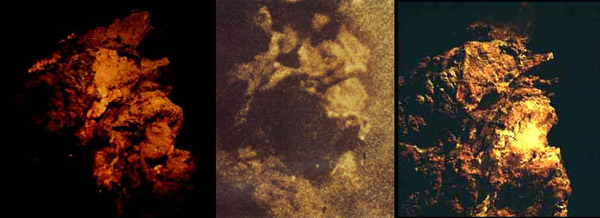
Tree-stump (left and
right) at same location in Loch Ness photographed by Dick Raynor.
The final good picture showed what
appeared to be the underbelly of the animal as it passed above the camera.
A broad, cylindrical object stretched right across the whole frame. The
most noticeable feature of this was a covering of what appeared to be lumps
or growths.
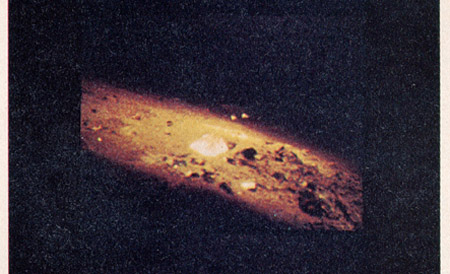
This is that photograph. Competent investigators recognise it as a view of the bottom of the loch.
The first step in an investigation is usually to examine the literature. If GUST and its U.S. Navy team had done that they might have fared better in their reassessment of the material, or, more likely, not have published anything at all. The best source for this topic is the MIT "Technology Review", March / April 1976, and Steuart Campbell's assessment in "The Loch Ness Monster - The Evidence", 1984.
